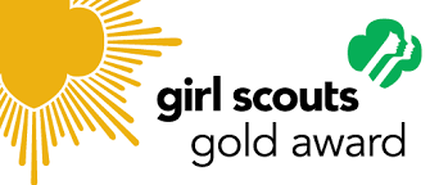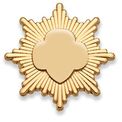What is GoGold online ?
Gogold Online is the GSUSA portal to submit your project proposal and final report. All Gold Award Proposals and final reports MUST be submitted through GoGold online. Don’t download or use the PDF versions that can be found online. If you do, you will end up doing double the work because you will have to re-enter your info in goldonline.
Gogold saves your info online, but it is known to have issues. Always save your work in a Word doc or something similar as a backup. It doesn’t spell check, so proofread what you write.
Gogold works better with Mozilla Firefox and Google Chrome Browsers. It is not compatible with phones or tablets. You will need to use a desktop or laptop.
Gogold saves your info online, but it is known to have issues. Always save your work in a Word doc or something similar as a backup. It doesn’t spell check, so proofread what you write.
Gogold works better with Mozilla Firefox and Google Chrome Browsers. It is not compatible with phones or tablets. You will need to use a desktop or laptop.
Ready To Start ?
Check your local Girl Scout Council's procedures.
Find and read all the information on your council's Gold Award page
If you can't find it, use the search words Gold Award in the search bar of your local council website.
Know which Application to use
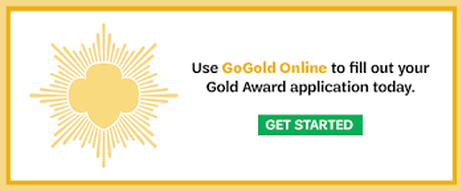
Many, but not all councils are now are now using GoGoldonline.
When you create your profile. make sure to select the correct council. It can be helpful to know your council's address.
For example, when you choose Girl Scouts of Orange County, Toledo Way, #100 should show up in the address.
If the address that pops up doesn't match your council, you chose the wrong council and you will not be scheduled for an interview when you submit!
When you create your profile. make sure to select the correct council. It can be helpful to know your council's address.
For example, when you choose Girl Scouts of Orange County, Toledo Way, #100 should show up in the address.
If the address that pops up doesn't match your council, you chose the wrong council and you will not be scheduled for an interview when you submit!
STEPS 1 & 2 Choose an Issue and Investigate
The first two steps are for your personal use to help narrow down your issue. They are not part of your proposal and cannot be viewed by your council. If you have info in this section you would like to share with your interviewer, you can repeat it in Steps 3 – 5.
STEP 3 Get Help
Troop/Group Volunteer An adult who has attended the GSOC Gold Award training. This is the person who should review your project with you to help you develop a good solid plan. If you receive feedback from GSOC to improve your plan, your troop/group advisor should be the adult who helps you evaluate the feedback and make the required changes. They can attend the interview with you. At this stage of progression, you should be working with adult mentors, beyond your family. It shouldn’t be your parent.
Girl Scout Gold Award Project Advisor – An adult from the agency or community organization you are partnering with. They are your subject expert, main contact or liaison who helps you connect with your target audience. It cannot be the same person as your troop/group advisor. Some examples would be the director of a non-profit that serves your target audience or a teacher if your project involves a school or education.
Project Advisor’s Organization:
List the agency they work for. It should relate to your project.
List the names of individuals and organizations you plan to work with on your Take Action project. This is a preliminary list that may grow through the course of your project.
We know your parents, pals & troop mates might help you. At the Gold level of progression this should be a team of people gathered from the community beyond family and friends & troop members. It should be a mix of peers & adults. If you know their individual names you can list them
Individual (if applicable) Organization Team Role
Key Club members FV High School Assist in teaching
Adult Volunteer XYZ Agency Subject Expert
Dept head FV USD help with outreach
President of key club FV HS key club sustain project
Girl Scout Gold Award Project Advisor – An adult from the agency or community organization you are partnering with. They are your subject expert, main contact or liaison who helps you connect with your target audience. It cannot be the same person as your troop/group advisor. Some examples would be the director of a non-profit that serves your target audience or a teacher if your project involves a school or education.
Project Advisor’s Organization:
List the agency they work for. It should relate to your project.
List the names of individuals and organizations you plan to work with on your Take Action project. This is a preliminary list that may grow through the course of your project.
We know your parents, pals & troop mates might help you. At the Gold level of progression this should be a team of people gathered from the community beyond family and friends & troop members. It should be a mix of peers & adults. If you know their individual names you can list them
Individual (if applicable) Organization Team Role
Key Club members FV High School Assist in teaching
Adult Volunteer XYZ Agency Subject Expert
Dept head FV USD help with outreach
President of key club FV HS key club sustain project
STEP 4 – Create a plan
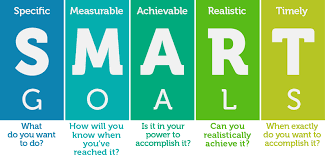
Project Details
Choose a descriptive name for your project & the category it belongs to.
Project Description
Describe the issue your project will address and your target audience. (Remember your 15-second pitch.)
This may sound obvious, but read and actually answer the question asked. Don’t start by describing your project. Start with what your issue. You should be able to clearly state it.
Your target audience is the people who your project will help or serve or educate. The specific people you will actually meet and talk or impact. Not “everyone” or “young kids” that is too vague. A specific answer would be “The student body of XWY school” or “the families served by Habitat for Humanity”.
Your target audience must be in the community beyond Girl Scouts or your immediate friends.
Discuss your reasons for selecting this project.
Where did you get the spark of the idea ? Why did it interest you enough to select it ? What research did you find in your research that made you want to take action ? The best projects come from girls who choose issues that they feel strongly about that they took the time to research. You interviewer will want to hear why it’s important to you & if your research shows it matters to others, too.
Outline the strengths, talents, and skills you plan to put into action. What skills do you hope to develop over the course of your project?
This question is self-explanatory.
Project Planning
Briefly describe the steps involved in putting your plan into action, including any resources, facilities, equipment, and approvals needed.
This should be a DETAILED summary of what you are planning to do. Include how you are addressing your issue, who you will involve, what research you have to do, how you will reach your target audience, how will you use your team, what you will actually be doing.
It is more important to explain what you are doing than what you are buying (I know it asks about equipment). If you are creating an educational program list the number of classes you will hold.
(Attach a detailed project plan as well.)
The suggested format for the project plan is a timeline. Since you may not know exact dates can estimate what tasks you may be doing month to month.
The project plan should be uploaded as a zip file in step 5.
Estimate overall project expenses and how you plan to meet these costs.
You can do an estimate. You don’t need to put a great amount of detail
As a GS you are not allowed to ask for money or raise money for another organization. Research the money earning guidelines by asking your troop leader or someone from your council
What methods or tools will you use to evaluate the impact of your project?
A Gold is required to make a measurable, sustainable impact on your issue. You need measurable goals for your project. A measurable goal includes numbers. You can “hope” for things to happen or want people to be happy. Those are your dreams for the project, but you must also include things that can actually count. You should have more than one thing that you will measure.
Examples are:
Survey to measure how many of the participants learned something new.
Stats - A decrease in the number of people experiencing your issue or an increase in the number of people participating in your program.
Count the number of people educated, number of events held, attendance records, how many schools you impacted.
How will your project be sustained beyond your involvement?
A person or agency must agree to continue your project. Writing a book, creating a manual, posting a website are good tools for your successor to use, but just handing them over to them & hoping they will use them isn’t enough. It is your job to use your leadership to educate (train) them & inspire them to continue what you started. A good way to do this is to identify someone on your team who shares your passion for the issue. Have them shadow you as you implement your project. Maybe even step into the background and let them take over before you are done.
Project Impact
Describe how you’ll let others know about your project, its impact, and what you learned (e.g., website, blog, presentations, posters, videos, articles).
We assume you will use social media. Beyond that what will you do ? – local papers. Agency websites, flyers, school district newsletters, public speaking, booths at community events, classroom visits, promotion to school clubs ?
Using the Impact Planning Chart, describe the impact you hope your project will have on your community and your target audience.
Impact On . . .
Goals
Potential Impact
Community
How will your project improve the lives of people or conditions in your community ?
What community issue do you plan to address?
This is a repeat of the info you may have answered above, but you can add more detail about research & stats or, root cause.
What examples of project impact might you see in the future?
How will your project change the world? How might your community look in a year or in five years bas a direct result of your actions ?
Target Audience (e.g., workshop participants, other youth, community members)
What skills will you impart to your target audience? How will you help or educate them ? What will your team will learn from you. You can include what you will be teaching or training them to do as well.
What skills, knowledge, or attitudes will your target audience gain?
List what you will teach them.
How will you know your audience gained skills/knowledge?
This is a place to include some of the ways you will measure your impact. Surveys or program evaluations can be used
Choose a descriptive name for your project & the category it belongs to.
Project Description
Describe the issue your project will address and your target audience. (Remember your 15-second pitch.)
This may sound obvious, but read and actually answer the question asked. Don’t start by describing your project. Start with what your issue. You should be able to clearly state it.
Your target audience is the people who your project will help or serve or educate. The specific people you will actually meet and talk or impact. Not “everyone” or “young kids” that is too vague. A specific answer would be “The student body of XWY school” or “the families served by Habitat for Humanity”.
Your target audience must be in the community beyond Girl Scouts or your immediate friends.
Discuss your reasons for selecting this project.
Where did you get the spark of the idea ? Why did it interest you enough to select it ? What research did you find in your research that made you want to take action ? The best projects come from girls who choose issues that they feel strongly about that they took the time to research. You interviewer will want to hear why it’s important to you & if your research shows it matters to others, too.
Outline the strengths, talents, and skills you plan to put into action. What skills do you hope to develop over the course of your project?
This question is self-explanatory.
Project Planning
Briefly describe the steps involved in putting your plan into action, including any resources, facilities, equipment, and approvals needed.
This should be a DETAILED summary of what you are planning to do. Include how you are addressing your issue, who you will involve, what research you have to do, how you will reach your target audience, how will you use your team, what you will actually be doing.
It is more important to explain what you are doing than what you are buying (I know it asks about equipment). If you are creating an educational program list the number of classes you will hold.
(Attach a detailed project plan as well.)
The suggested format for the project plan is a timeline. Since you may not know exact dates can estimate what tasks you may be doing month to month.
The project plan should be uploaded as a zip file in step 5.
Estimate overall project expenses and how you plan to meet these costs.
You can do an estimate. You don’t need to put a great amount of detail
As a GS you are not allowed to ask for money or raise money for another organization. Research the money earning guidelines by asking your troop leader or someone from your council
What methods or tools will you use to evaluate the impact of your project?
A Gold is required to make a measurable, sustainable impact on your issue. You need measurable goals for your project. A measurable goal includes numbers. You can “hope” for things to happen or want people to be happy. Those are your dreams for the project, but you must also include things that can actually count. You should have more than one thing that you will measure.
Examples are:
Survey to measure how many of the participants learned something new.
Stats - A decrease in the number of people experiencing your issue or an increase in the number of people participating in your program.
Count the number of people educated, number of events held, attendance records, how many schools you impacted.
How will your project be sustained beyond your involvement?
A person or agency must agree to continue your project. Writing a book, creating a manual, posting a website are good tools for your successor to use, but just handing them over to them & hoping they will use them isn’t enough. It is your job to use your leadership to educate (train) them & inspire them to continue what you started. A good way to do this is to identify someone on your team who shares your passion for the issue. Have them shadow you as you implement your project. Maybe even step into the background and let them take over before you are done.
Project Impact
Describe how you’ll let others know about your project, its impact, and what you learned (e.g., website, blog, presentations, posters, videos, articles).
We assume you will use social media. Beyond that what will you do ? – local papers. Agency websites, flyers, school district newsletters, public speaking, booths at community events, classroom visits, promotion to school clubs ?
Using the Impact Planning Chart, describe the impact you hope your project will have on your community and your target audience.
Impact On . . .
Goals
Potential Impact
Community
How will your project improve the lives of people or conditions in your community ?
What community issue do you plan to address?
This is a repeat of the info you may have answered above, but you can add more detail about research & stats or, root cause.
What examples of project impact might you see in the future?
How will your project change the world? How might your community look in a year or in five years bas a direct result of your actions ?
Target Audience (e.g., workshop participants, other youth, community members)
What skills will you impart to your target audience? How will you help or educate them ? What will your team will learn from you. You can include what you will be teaching or training them to do as well.
What skills, knowledge, or attitudes will your target audience gain?
List what you will teach them.
How will you know your audience gained skills/knowledge?
This is a place to include some of the ways you will measure your impact. Surveys or program evaluations can be used
STEP 5 – Present your plan
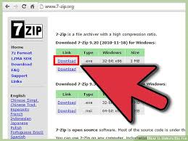
Council Information
Make sure to choose the correct council. Girl Scouts of Orange County is listed as Orange County. When you put that in, 9500 Toledo Way, #100 should show up in the address. If it doesn’t, you chose the wrong council.
If you'd like, download your final report to review before submitting it to your council. Do this. It will download as a PDF. You will always want to have a current copy. You must send it to your troop/group advisor to review and feedback before you submit it. You can email them the PDF.
Sometimes Gogold is offline. You will also need a copy to give to your project advisor to sign. You should bring the signature page to your interview or make a PDF of the signature page & include it in your ZIP file.
Got additional forms you want to send? Zip the files and upload below to include them with your project proposal.
This is where you can include your timeline, detailed project plan, research or any other materials you want your interviewer to see. If you don’t know how to create zip file – google the instructions. or click the picture.
Note that by clicking "Complete this step", your proposal and any accompanying files are officially submitted. You need to hit the Email Your Project Proposal button. This will put you on the list of the next interview date.
Make sure to choose the correct council. Girl Scouts of Orange County is listed as Orange County. When you put that in, 9500 Toledo Way, #100 should show up in the address. If it doesn’t, you chose the wrong council.
If you'd like, download your final report to review before submitting it to your council. Do this. It will download as a PDF. You will always want to have a current copy. You must send it to your troop/group advisor to review and feedback before you submit it. You can email them the PDF.
Sometimes Gogold is offline. You will also need a copy to give to your project advisor to sign. You should bring the signature page to your interview or make a PDF of the signature page & include it in your ZIP file.
Got additional forms you want to send? Zip the files and upload below to include them with your project proposal.
This is where you can include your timeline, detailed project plan, research or any other materials you want your interviewer to see. If you don’t know how to create zip file – google the instructions. or click the picture.
Note that by clicking "Complete this step", your proposal and any accompanying files are officially submitted. You need to hit the Email Your Project Proposal button. This will put you on the list of the next interview date.
What else are we looking for that might not be clearly stated in these questions
What else are we looking for that might not be clearly stated in these questions
Scope – Does it serve enough people ? Take action projects from Journey to Bronze silver & Gold should serve a progressively larger audience. Think big – your city, your whole school, your school district. If you work with a smaller group, you would have to create a project that impacts them deeply.
Effectiveness – Does the approach you have chosen effectively tackle your issue ?
There isn’t a one size fits all.
Here are a couple of examples
If you want to do something that changes people’s habits, such as how they eat, a single meeting won’t be enough. You would need to work with the same population multiple times over a few months to see if they have adapted their lifestyle.
If you are trying to increase awareness of an issue, you might not to need to meet your audience more than once, but you would want to reach out to several places and hold more events, presentations or get more publicity.
Scope – Does it serve enough people ? Take action projects from Journey to Bronze silver & Gold should serve a progressively larger audience. Think big – your city, your whole school, your school district. If you work with a smaller group, you would have to create a project that impacts them deeply.
Effectiveness – Does the approach you have chosen effectively tackle your issue ?
There isn’t a one size fits all.
Here are a couple of examples
If you want to do something that changes people’s habits, such as how they eat, a single meeting won’t be enough. You would need to work with the same population multiple times over a few months to see if they have adapted their lifestyle.
If you are trying to increase awareness of an issue, you might not to need to meet your audience more than once, but you would want to reach out to several places and hold more events, presentations or get more publicity.

